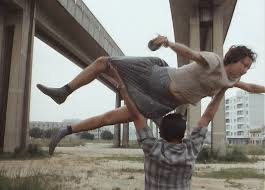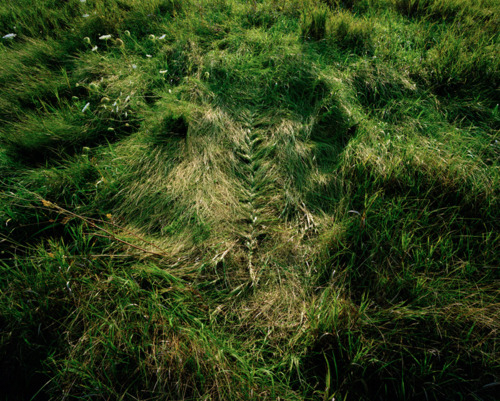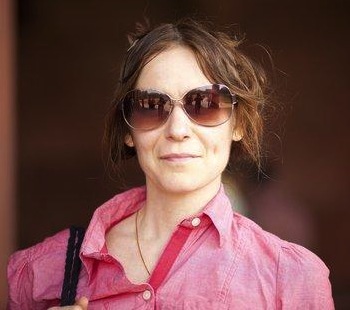Interviews
I write to see what is inside my mind: An Interview with Amina Cain
“I’m not sure why I’ve written so many flat male characters. I think it’s more that I have wanted to pay attention to the female characters and so I have.”
 Kate Zambreno first changed my life when she wrote Heroines, and second when she wrote on her Facebook page that she can’t wait to read Amina Cain’s new book. I read Creature as soon as it was released and it also changed me, but in a familiar way. I felt instantly connected to Amina’s writing and her characters in particular—the first person narrative, the painted landscape of the mind, the abstract settings. I had only discovered Clarice Lispector a year before, and I felt a resonance between the two. Part of the reason I love Lispector’s writing so much is her ability to reach so far into her characters’ psyches. Amina Cain, in a completely different way, also reaches into her characters’ psyches. Amina’s way feels much more meditative and connected to the earth. Lispector is often very much “above” the earth. Amina’s stories are mysterious, full of curiosity, and very dark and then suddenly extremely funny. When I saw the name Clarice used as one of the character’s names in a story, I knew it was no coincidence. I also knew I had to contact Amina Cain immediately.
Kate Zambreno first changed my life when she wrote Heroines, and second when she wrote on her Facebook page that she can’t wait to read Amina Cain’s new book. I read Creature as soon as it was released and it also changed me, but in a familiar way. I felt instantly connected to Amina’s writing and her characters in particular—the first person narrative, the painted landscape of the mind, the abstract settings. I had only discovered Clarice Lispector a year before, and I felt a resonance between the two. Part of the reason I love Lispector’s writing so much is her ability to reach so far into her characters’ psyches. Amina Cain, in a completely different way, also reaches into her characters’ psyches. Amina’s way feels much more meditative and connected to the earth. Lispector is often very much “above” the earth. Amina’s stories are mysterious, full of curiosity, and very dark and then suddenly extremely funny. When I saw the name Clarice used as one of the character’s names in a story, I knew it was no coincidence. I also knew I had to contact Amina Cain immediately.
***
LW: When did you start writing?
AC: I began writing during my last year of college. I started out as an acting major, which I quickly gave up, switching to Women’s Studies. I knew I wouldn’t necessarily do anything specific with this major, but I was interested in the classes. Then, when I took my first creative writing workshop, I knew I had found what I wanted to do with my life.

from the film adaptation of Hour of the Star
There are many references to Clarice Lispector in your work and in your story Queen you quote from The Hour of The Star: “forgive me if I add something more about myself since my identity is not very clear, and when I write I find that I possess a destiny. Who has not asked himself at one time or other: am I a monster or is this what it means to be a person?” When did you first discover Clarice Lispector? Would you say you connect similarly to her themes of the metaphysical experience of “finding yourself” through the process of writing?
I relate very much to the idea of finding oneself through writing, though what “oneself” is I think is malleable. And that Buddhist idea that to study the self is to find the self and to find the self is to lose the self resonates a lot for me. I’ve been curious lately about why I am so driven to write first person narratives (that are both not me and me) as opposed to third person, for instance. It’s not that I want to tell a story of myself, or even of another, it’s that I want to inhabit something—some feeling, some space (physical or psychic, and yes, even just the space of writing), or voice, and the first person, for whatever reasons, allows me to do this in the strongest way. I certainly think that Lispector’s fiction does this too, much more so than simply telling a story. She creates these charged psychic spaces we can walk into as readers. I first read Lispector the second time I lived in Chicago. I checked out from the library Family Ties, a collection of short stories. Then The Hour of the Star.
So many of your stories seem to be about a central narrator. They can be separate and yet they feel a part of a continuous story. Can you talk about the narrator of your stories? Do you consider her a persona? Do you see her as existing in each of your stories? Or is she different, a new character, each time?
I see the narrators in Creature as different beings but as sharing a single heartbeat. I wanted them to be both separate and connected. In Tisa Bryant’s amazing Unexplained Presence a beautiful continuum comes into being, or else a soft light is shone on connections already present between people who existed throughout time but never knew each other, or even knew to know each other. I was so struck by that when I first read Bryant’s book, and I think the idea of the continuum has stayed with me since, though of course in a different way.
There is a quality of bleakness to your characters, or to quote from one of your titles, “a threadless way” about them. They are very honest about the fact that they don’t know what they are doing or how to connect to others. (And yet, because of this, they do know—like what you were saying about finding the self to lose the self, etc.)
This is a sharp contrast to what we are used to seeing in a lot of contemporary literature. (Of course, “flawed characters” are everywhere—but usually they don’t know they are flawed and when they do, their revelation is fleeting or they step into denial.) Your characters have the ability to speak, feel, and live out their insecurities, distastes, annoyances, melancholy, and this gives them a strange hopefulness and positivity.
I think that most of my characters are searching for something, are always in process with the world around them, and that much of what gets expressed in the stories are the things that are usually not said, supposed to be said, voiced. In fiction, I’m as interested in an inner life as an outer one, and I want to write that life. I think it can propel a narrative forward as much as plot can. There is drama there, and conflict, and relationship, and even setting. I’m glad that the characters feel hopeful to you. Sometimes there is a focus on the sadness and vulnerability in my stories, elements that are certainly present, but to me there is also absurdity and humor.

The cover of your second book, Creature, is beautiful— the back of a woman’s head looking over a landscape. I am tempted to use this word—landscape—to describe many of your stories. It is as if a landscape of both the exterior scene and the mind (thought and emotion) is being painted simultaneously. Do you think in a story there is a contrast between writing as a “landscape” and writing with an “arc”? Do you think about this at all when you write?
Absolutely, and I love this question. In fact, I’ve been thinking about all of it a lot lately, even using that word—landscape—to describe what I’m interested in doing in fiction, or I should say what I have begun to realize I do within my stories already. I’ve been thinking about how a work of fiction can be like a landscape painting, how a short story can be like that, with characters moving through it. Because, yes, it’s not that narrative arc I write toward, but the space a character or characters inhabit.
Your characters create a very interesting dichotomy; on the one hand they are extremely isolated and living in a world unto themselves, and at the same time they are constantly collaborating, working through things with others, trying very hard to learn from/understand/communicate with the other people in their lives. There is a real disparity that exists in this way. Can you talk a little about the idea of collaborating with another, and what it means in your art and in life?
This is a great question. There’s the kind of basic answer, of the solitary nature of writing and the desire to work outward, with others, and there’s the answer that has more to do with what I see the stories as often being about—closeness and distance, in all kinds of ways—and the pleasure and suffering that comes from that. When I was younger I often painted these stories of myself in my head where I went off to different cities—alone—and lived very vibrantly there, walking around, taking it all in, and yet friendship has always been significant for me and I’ve been lucky enough to be close to people I have immense love for. I’m not sure where that fantasy of living in my own world came from, just to say that aloneness and kinship are both important and I think the two things are imprinted in my work.
How would you describe your writing as it relates to the genres of “near fiction” or “autofiction” writing that based primarily from life? (Or, what is the genesis for your stories?)
Answering this question makes me think again of a continuum. Not the continuum of Unexplained Presence, or even of how my narrators are in relation to each other, but simply in that way in which me and my life both play a part in the stories and don’t. You use the word spectrum, which is another way to express it. And then I think of the questions what does “me” mean, what does “my life” mean? Is it what I’ve lived, what I’ve felt and thought? What I’ve gone toward, what I haven’t completely gone toward, but have approached? Those questions of the self. I think Suzanne Scanlon’s novel Promising Young Women gets at some of this in deeply interesting ways. Kate Zambreno’s ideas about what it is to write non-fiction or fiction, and where they meet, has been enormously inspiring and transformative for me, the “non-fiction novel” she talks about. My husband Amarnath Ravva, who is also a writer, sometimes worries about the flat husbands who appear in my stories, but they are not him. I’m not sure why I’ve written so many flat male characters. I think it’s more that I have wanted to pay attention to the female characters and so I have.
In “I will Force This,” the story begins with the speaker saying, “Lately I’ve been having a hard time knowing what’s good. I don’t even know how to write. Maybe I am only a reader. I try to force things, force stories. I have to work on a story for many, many months before it makes sense.” Can you describe the difference between an idea or portion of writing when it feels more forced or more natural? Do the two shape shift for you?
I liked the idea of this character trying to apply force to a story in a kind of humorous way, though in my own experience that sort of aggression never works. If a text—or even a part of it—is forced, it will likely be cut/pushed out. I’m one of those writers who follow my subconscious, which means that sometimes I am still figuring out for myself why I wrote a particular line or scene. I think I write to see what is inside my mind.

“But also, what if you are a short story writer or a novelist interested in something other than story? What if when you look at a piece of art there is something in it you want to try in writing, because to you it seems as if a story should be able to hold something like that—hold possibilities, not exclude them.” You wrote the essay “Something Has Brought Me Here” in the Paris Review Daily blog, and this sentence stood out to me as revolutionary. It’s a concept that seems so natural in writing prose and yet it’s very often discouraged against for the obsession of plot and happenings. To hear you articulate it this way really created sense out of the difference between a plot-driven story and the “possibilities.”
It’s been helpful lately for me to think through what I want my fiction to do, or to at least reflect on what I’ve been doing with it, what spaces it’s allowed me to enter. I’ve always been inspired/influenced by art and film and performance, and when I see something that moves me it’s the same as reading a book I love: I immediately want to write. I’ve never seen a painting and thought: I want to try painting. It’s always been: is there something here in the space of this painting I can get to in a story?
I think that fiction is often seen as a fixed thing, by fiction readers/writers, and also sometimes by poets. It’s not always perceived to be a site of possibility, but I truly believe that it is.
Are you a morning person or a night owl? What is something you saw/read/overheard today that seemed wise?
I’m kind of neither, and boring in that way! I go to bed around midnight and wake up around eight. I’m an evening person—it’s my favorite time of day. Though afternoons are very nice too.
This, from John Keene’s translation of Hilda Hilst’s Letters From a Seducer (Nightboat/A Bolha Editora)
***
Lauren Wallach‘s writing has appeared or is forthcoming in The Collagist, Requited, Joyland, and Electric Literature. She holds an MFA from Sarah Lawrence College and lives in Brooklyn.
Amina Cain‘s most recent book is Creature, a collection of short stories out from Dorothy, a publishing project. Writing has appeared in BOMB, n+1, Denver Quarterly, The Paris Review Daily, Two Serious Ladies, and other places. She lives in Los Angeles.
Tags: amina cain, Clarice Lispector, kate zambreno

[…] a bird’s beak, a coat, a fulgurite – for the reader to gather, reconfigure, and disperse. In an interview with Lauren Wallach for the now-defunct HTMLGIANT, Cain said: “I see the narrators in Creature as different beings […]
[…] go to work, knit, swim, think, look around. But what they have to look at is often very nice. In an interview this June with Lauren Wallach, Cain spoke about writing landscapes instead of narrative arcs. These […]